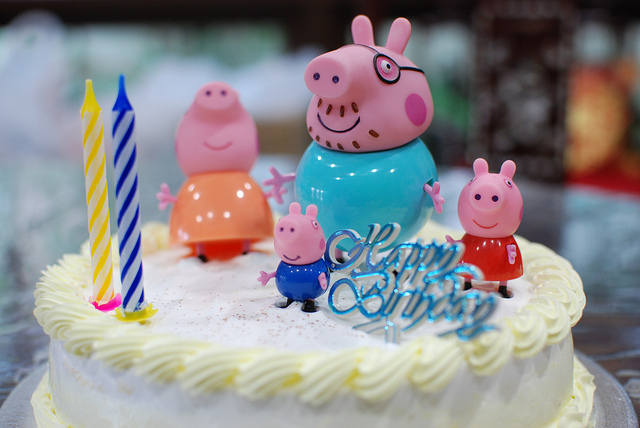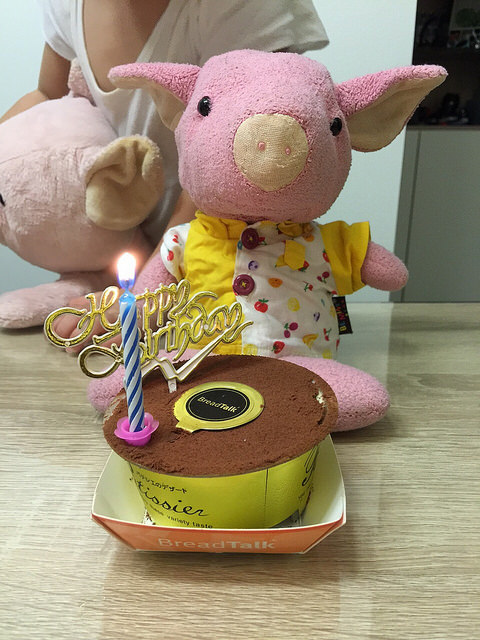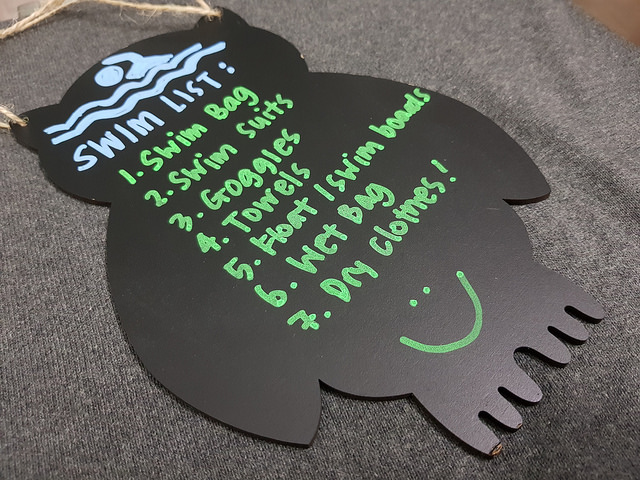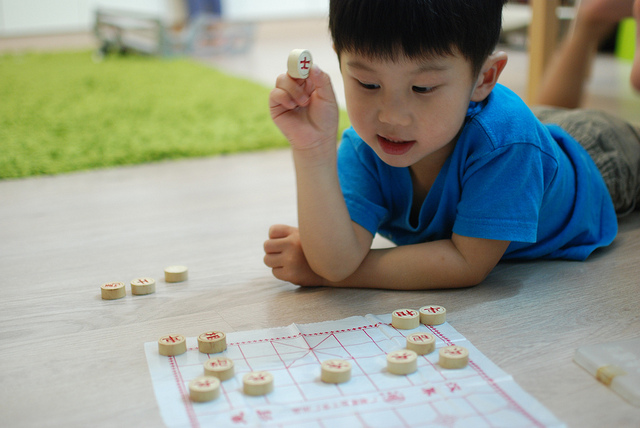
My 3yo & Chinese Chess.
Jerry pulled out my chinese chess set from my cupboard that’s filled with loads of card and board games 3 nights ago. And he bugged me for more than 15 mins to play it with him.
Just how do you play Chinese chess with a 3yo? A game that involves recognising the different characters, the various moves each make and the strategy behind the game? And he, for now, someone that can’t even recognise a single Chinese character yet? I tried explaining that the game is too difficult, and that its really meant for papa & mama but he wouldn’t take no for an answer and kept telling me, “Play with me!!”. I was on the verge of taking the game away from him and telling him “NO!” straight in his face when I remembered that one of my 2015 plans was to spend more time with the kids, and engage them more often. I shouldn’t try to turn him away especially since he is showing that much interest.
So I took a deep breath and said, “OK.” My mind was racing… Seriously, how to play?!

Here’s how I taught him. Might be useful if you ever want to teach your kids!
1. Explain briefly on the scene (i.e. board)
I didn’t make it too complicated. I just say there are 2 different sides/countries and there is a river in between them. The 2 countries have to fight with each other in a battle.

2. Sort out the chess pieces.
For someone who doesn’t know how to read the characters, I knew I had to rely on the shapes. I turned it into a little game and got Jerry to sort the same looking ones together. Even so, he had a bit of difficulty differentiating between the more complicated words.
By the end of it, I had 5pcs of the 兵 (soldier), and 2pcs of everything else and a standalone piece of the 将 (general). I guess it helps the little one recognise the words better with this little activity.
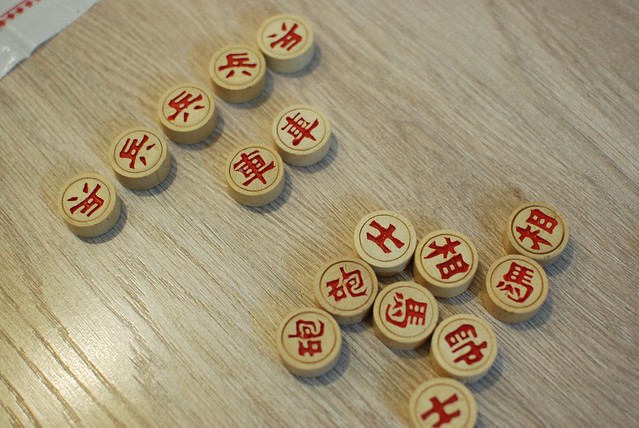
3. Explain each of the chess pieces.
How do you get a 3yo to remember them all? I spun a story around it. I started with the 兵 (soldier) since that has the most pieces (5 of them!) and the probably the easiest to explain. I simply said that the soldiers need to defend the country and they need to stand in front of the river, where it is marked on the board. At the same time, I placed those pieces in their respective spots at the same time. I went on to the 将 (general) next, and said since there is only 1 of him, he is the most important person in the country. He must be in the centre right at the back (*plonks chess piece in correct position). My story continues, repeating plonking the pieces accordingly.
Since the general is the most important person, he needs to have 2 bodyguards (士). The bodyguards are right beside him and they all ride an elephant (象) (a little off, but whatever works right?). They also have a horse (马) and car (车) beside them. The canon (炮) occupies the last 2 marked position on the board and they nee to be in the centre to protect everyone. I repeated the story a few times with the kid, and then I quiz him along the way.

4. Rinse & Repeat. Ask the kid to lead this time.
Once I was completed, I repeated my story/quiz the boy with simple questions (How many soldiers are there? Where are the soldiers) and ensure that he understands the board. If he doesn’t, I explain and guide him along. I then sweep all the pieces away and have the boy repeat step 2 by himself and assist him to plonk the pieces on the board, prompting him whenever necessary.
It took me 45mins. At the end of it all… this happened. WOW.
I stopped here because I wanted him to fully understand the basics first before proceed to the moves and subsequently the strategy. I intend to practise with him till he masters all that I taught him to a T, with no chance of getting the characters confused before I move on. After all, the foundation must be right!
I didn’t expect him to actually fully adsorb all of that, but he did and I was really impressed. I guess his interest level in it really helped because never once he said he wanted to stop when he couldn’t put the pieces together. This whole episode taught me something important. That nothing is impossible when the kid is keen. And that I shouldn’t restrict him to activities for his age but let him lead in the learning. If he is interested in something, I will teach and share… and not push him away thinking he won’t be able to do it. I shouldn’t be doing that to my kids because I would be hindering their learning.
Everything can be learned if I break it down into small bits and teach it over a period of time.And that’s what I will be doing from now on. Don’t diminish the desire in the kids and tell them I’m busy, it’s too difficult for you or you can’t do this. They can and they will. We all started out the same as a baby isn’t it?
Keeping their curiosity alive is an important step of learning. Kids really know no boundaries. The only boundaries they know, are the ones we impose.
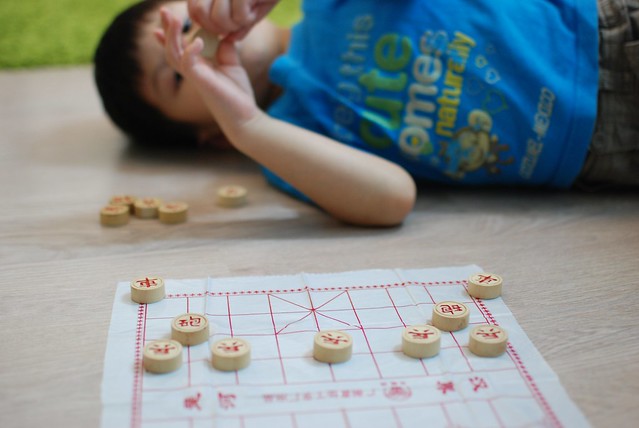
P.s. the husband is mighty impressed after he finished washing the dishes and the chores in the kitchen.

